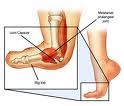|
It seems as though the entire planet has been consumed with World Cup fever the past few weeks, and for good cause. This year's tournament is living up to its' high expectations. The United States' first group win since 1930, and many upsets, including defending champs not even emerging from group play!
While there have been great moments, there have also been some not so great moments. Many people cannot get the hive of bees, I mean vuvuzelas, from ringing in their ears for hours after the games are already over. Not to mention blown calls by referees; reversing goals from players called offsides when they weren't, and not counting goals that were good by at least 3-4 feet. However, for many, the worst part of the World Cup is all of the FLOPPING! Soccer players are notorious for flailing their bodies about at the very threat of contact, attempting to get a call in their favor. It seems that a lot of these soccer players could have quite the career on Broadway after they retire from the pitch. However, while at times these players will fake and injury, many of these great athletes push through painful injuries that would keep most of us off of the field. One of the painful injuries that plague soccer players from the World Cup to high school and recreational team fields is the dreaded Turf Toe. Turf toe is an injury to the big toe when it is extended upward with high force. This injury often occurs in athletes who play soccer, football, and rugby. Turf toe received its name due to the large number of these injuries happening on artificial turf or surfaces. Turf toe typically occurs when an athletes shoe sticks to the turf while their bodyweight continues to go forward, causing the toe to hyperextend upward. Turf toe usually presents with pain and inflammation at the base of the big toe, or 1st metatarsal joint. Pain with flexion or extension of the big toe is another common symptom. If the injury is severe enough, the ligaments and bone on the bottom of the big toe can be damaged. Turf toe sprains are categorized by 3 grades. Grade 1 is accompanied by mild pain, but not limiting a player from competition. Grade 2 can cause an athlete to have to rest 3-14 days, while Grade 3 injuries can cause missed playing time of 2-6 weeks. Treatment of turf toe is variable based on the grade of injury. All injuries are acutely treated with rest, ice, compression, and elevation (RICE), as well as non-steroidal anti-inflammatory drugs (NSAIDS). Crutches are used for more severe sprains to allow the joint to heal without weight bearing. Your physical therapist can assist with further treatment through taping the joint to prevent motion. Therapeutic modalities such as ultrasound may be used to help increase the rate of healing. Typically, around 3-5 days after injury, pain free range of motion activities are initiated. All grades of injury can benefit from a rehabilitation and strengthening program developed by a physical therapist. Physical therapy plays an important role in recovery and prevention of hallux limitus (the development of arthritis in the joint, thereby decreasing range of motion). One hallux limitus is developed, it can have a lasting effect on gait mechanics, leading to further injuries in other joints of the lower extremeties. So as you watch the rest of the World Cup and happen to see a player flip into the air from tripping over an imaginary line...just remember, real injuries CAN actually happen without contact.
0 Comments
Leave a Reply. |
Quote of the Day"You are always only one choice away from changing your life." Archives
April 2023
|
San Diego, CA 92121 Fax: (858) 457-0976 M - F: 6:45 am - 7:00 pm
Email: [email protected]


 RSS Feed
RSS Feed